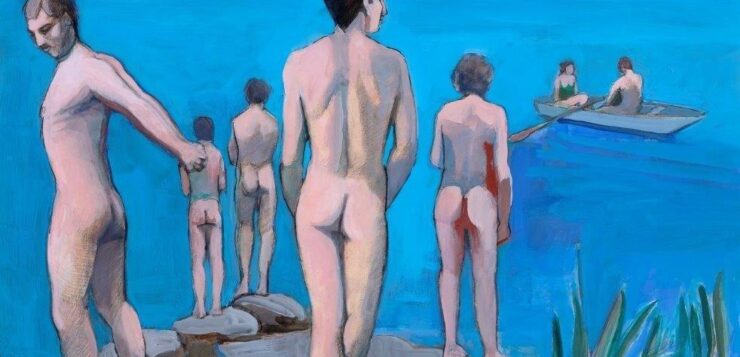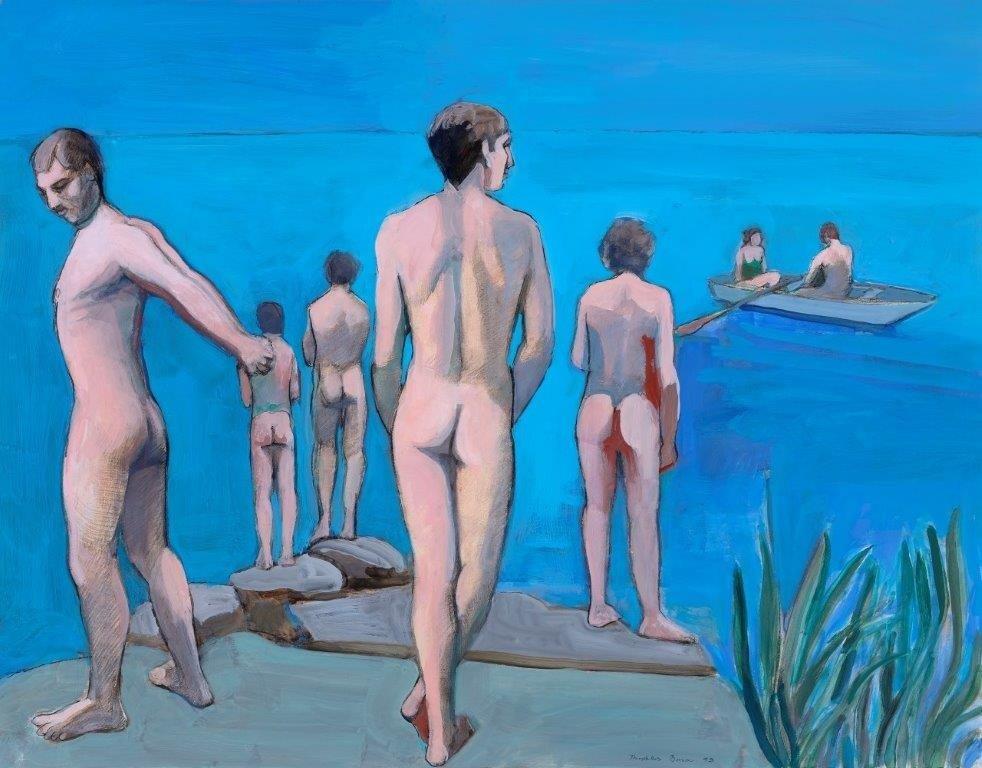A TRAVELING EXHIBITION titled Breaking the Rules, now at Memphis’ Dixon Museum, presents an enlightening narrative about the groundbreaking work of two remarkable gay artists, Paul Wonner and Theophilus Brown, who ignited an artistic flowering known as the Bay Area Figurative Movement from their Berkeley studio. Wonner and Brown, whose 56-year relationship was forged during the McCarthy era, did break many rules, but they paid a high price for it. Their tendency to focus on the male figure discouraged critical attention and commercial success. Only now, through this retrospective, is their artistic contribution being duly recognized.
Paul Wonner (1920–2008) and William “Theophilus” Brown (1919–2012), despite being recognized as Bay Area artists, hailed from Tucson, Arizona, and Moline, Illinois, respectively. They met in 1952 while both were pursuing a master’s degree in art at UC-Berkeley, and the rest is history. And yet, they had very different personalities. Wonner, who was shy and soft-spoken, thought the gregarious Brown was a bit of a snob, and he had a point. Brown graduated from Yale and had mingled with influential cultural figures like Picasso and Stravinsky during the postwar years, when Elaine and Willem de Kooning took him under their wing.







